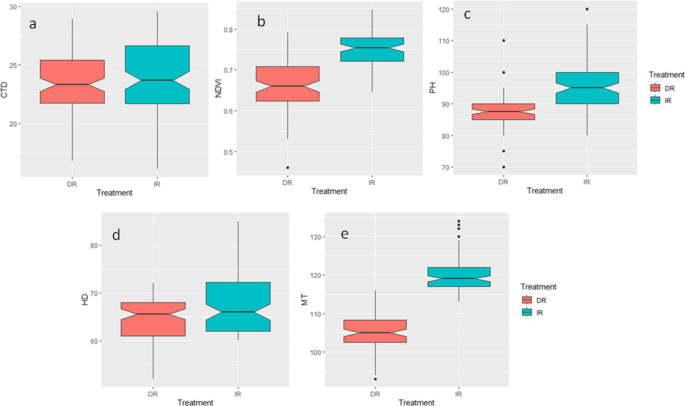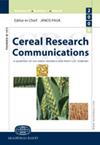Skipping irrigation at pre- and post-anthesis stages influences grain yield and starch contents of bread wheat derived from synthetic or landraces
IF 1.9
4区 农林科学
Q2 AGRONOMY
引用次数: 0
Abstract
Abstract This study aims to evaluate the role of genetic diversity originated from three-way crosses of landraces and synthetic bread wheat derivatives attempted with elite cultivars to identify the genotypes having better grain yield as well as better starch contents under flowering stage drought stress. In total, 50 genotypes comprised of 47 derivatives of landraces and synthetics, and three standard varieties were grown in the fields of CIMMYT, Obregon following alpha lattice design with two replications. Drought stress was imposed by stopping the irrigation before anthesis and post-anthesis stages. Different traits related to physiological adaptations, earliness, grain yield and starch contents were decreased under drought stress except amylose which increased significantly. Canopy temperature depression was not significantly affected by drought stress. Further, we identified strong correlation of grain yield with plant height, normalized difference in vegetation index, plant maturity, spike length, grain number and thousand grain weight but negative with canopy temperature depression. Non-significant correlation of amylose and amylopectin was recorded with grain yield. Results revealed that genetic diversity derived from landraces and synthetic bread wheat can improve grain yield and starch contents but simultaneous improvement of both is elusive.

花前和花后不灌水对合成品种和地方品种面包小麦籽粒产量和淀粉含量有影响
摘要本研究旨在评价地方品种和合成面包小麦衍生物三元杂交遗传多样性在花期干旱胁迫下籽粒产量和淀粉含量较高的基因型中的作用。采用α晶格设计,2个重复,在奥布雷贡CIMMYT大田种植了由47个地方品种和合成品种组成的50个基因型和3个标准品种。在花前和花后阶段停止灌溉,施加干旱胁迫。干旱胁迫下,除直链淀粉显著增加外,生理适应性、早熟性、籽粒产量和淀粉含量等相关性状均显著降低。干旱胁迫对冠层温度下降影响不显著。籽粒产量与株高、植被指数、植株成熟度、穗长、粒数和千粒重的归一化差异呈显著正相关,与冠层温度下降呈负相关。直链淀粉和支链淀粉与籽粒产量无显著相关。结果表明,地方品种和合成面包小麦的遗传多样性可以提高籽粒产量和淀粉含量,但两者的同时提高是难以实现的。
本文章由计算机程序翻译,如有差异,请以英文原文为准。
求助全文
约1分钟内获得全文
求助全文
来源期刊

Cereal Research Communications
AGRONOMY-
CiteScore
3.40
自引率
6.20%
发文量
92
审稿时长
6-12 weeks
期刊介绍:
This journal publishes original papers presenting new scientific results on breeding, genetics, physiology, pathology and production of primarily wheat, rye, barley, oats and maize.
 求助内容:
求助内容: 应助结果提醒方式:
应助结果提醒方式:


